1965 Chevrolet Corvette L78 396/425 Frame-Off Convertible
- Location: Local pick-up only
- Condition: Used
- Make: Chevrolet
- Model: Corvette
- Type: Convertible
- Trim: L78 396/425 Frame-Off
- Year: 1965
- VIN: 194675S113601
- Color: Black
- Engine size: 396/425
- Interior color: Blue
- Vehicle Title: Clear
1965 Chevrolet Corvette L78 396/425 Frame-Off Description
RARE! Stunning paint (code AA) Tuxedo Black 1965 Corvette L-78 big block 396/425hp roadster, trim (code 414) Bright Blue interior two tops, black cloth soft top and black painted auxilary hard top. Frame-off restored with close to 70k in receipts and attention to detail. Very unique and rare black and blue color combination. One of only twelve produced. Beautiful black stingray body with great lines and panel fit. New correct bright blue interior with new seat covers, carpet and door panels and orignal dash gauges with 6500 redline tachometer and 80psi oil gauge which further validates the authentisity of this rare L-78 big block car, powered by a highly desirable 396/425 h.p. engine, block casting number 3855962, with a 4-speed manual transmission and posi rear with 3.70 gear. This amazing piece of Corvette history was painstakingly nut and bolt frame off restored in 2016 and is documented with a complete catalog of restoration receipts and photos. Optioned with factory side exhaust, turbine style knock off wheels and Goodyear Speedway Blue Streak blue line tires.EXTERIOR:
Professional frame-off, nut and bolt restoration in 2016 with close to 70k in receipts. Restoration by Corvette Service Company in Capinteria, California NCRS shipping data report Correct AA-code Tuxedo Black paint Factory big block buldge hood Factory tinted windows Factory side exhaust Factory turbine style knock off wheels and Goodyear Speedway Blue line tires Two tops, black cloth soft top and restored black painted to match auxillary hard top.INTERIOR:
Correct 414 trim code Bright Blue interior New seat seat covers New door panels and carpet Correct big block 6500 redline original tachometer Correct big block 80psi oil pressure gaugeMECHANICS:
396/425hp engine, block casting # 3855962 Rebuilt 4 speed transmission Updated aluminum big block radiator Upgraded dual brake master cylinder 4 wheel disc brakes New gas tank Correct big block half shafts Correct big block heavy duty sway barUNDERCARRIAGE:
3.70 positraction rear end New trailing armsWikipedia InformationThe Chevrolet Corvette (C2) (also known as the Chevrolet Corvette Sting Ray) is the second generation of the Chevrolet Corvette sports car, produced by the Chevrolet division of General Motors for the 1963 to 1967 model years.[4]For its third season, the 1965 Corvette Sting Ray further cleaned up style-wise and was muscled up with the addition of an all-new braking system and larger powerplants. 1965 styling alterations were subtle, confined to a smoothed-out hood now devoid of scoop indentations, a trio of working vertical exhaust vents in the front fenders that replaced the previous nonfunctional horizontal "speedlines," restyled wheel covers and rocker-panel moldings, and minor interior trim revisions. The 1965 Corvette Sting Ray became ferocious with the mid-year debut of the "Big-Block" 396 cu in (6,490 cc) engine producing 425 hp (317 kW). Ultimately, this spelled the end for the Rochester fuel injection system, as the carbureted 396ci/425hp option cost $292.70 to the fuel injected 327ci/375hp's $538.00. Few buyers could justify $245 more for 50 hp (37 kW) less, even if the FI cars offered optional bigger brakes not available on carbureted models.[13] After only 771 fuel injected cars were built in 1965, Chevrolet discontinued the option. It would be 18 years until it returned.
1965 also added another 350 hp small block engine (Option L79) which used hydraulic rather than solid lifters, a milder camshaft and a modestly redesigned smaller oil pan.[14] Otherwise, the 350 hp engine was cosmetically and mechanically identical to the 365 hp engine (Option L76) solid lifter engine. The smaller oil pan allowed this high output small block 350hp engine to be ordered with optional Power Steering for the first time amongst the optional stable of higher output small block engines. Power steering was previously only available with the lower 250 hp and 300 hp engines.
Four-wheel disc brakes were also introduced in 1965. The brakes had a four-piston design with two-piece calipers and cooling fins for the rotors. Pads were in frequent contact with the rotors, but the resulting drag was negligible and did not affect fuel economy. Further, the light touching kept the rotors clean and did not diminish pad life, which was, in fact, quite high: a projected 57,000 mi (92,000 km) for the front brakes and about twice that distance for the rear binders. Total swept area for the new system was 461 sq in (2,970 cm2), a notable advance on the 328 sq in (2,120 cm2) of the previous all-drum system. Per pending federal regulation, there was also a dual master cylinder with separate fluid reservoirs (only on models with power brakes for 1965)[15] for the front and rear lines. Road testers rightly applauded the all-disc brakes. Testers found that repeated stops from 100 mph (160 km/h) produced no deterioration in braking efficiency, and even the most sudden stops were rock-stable. The drum brakes remained available, however, as a $64.50 credit option, but only 316 of the 23,562 Corvettes built that year came with drums.[8][7] A side exhaust system appeared as an option as did a telescopic steering wheel. Also available were alloy spinner rims, at US$322 a set.[13]
American Dream MachinesAt American Dream Machines, we typically have over 100 quality classic cars and trucks in stock and for sale. We have everything from Corvettes to Cadillacs; including Camaros, Mustangs, Mopars, GTOs, Chevelles, Bel Airs, Blazers and exotic sports cars. Our classics and muscle cars range from the 1950s to the 1970s. Our inventory is diverse and continuously changing and always growing! Our #1 Goal is to make you, our customer happy with the American classic and muscle cars we offer. We highly recommend that ALL CUSTOMERS call our knowledgeable, experienced staff and with our Midwest values will have very detailed discussions regarding the overall condition of any of our classics that you are considering getting in the drivers seat of. Our phone number is (515)-245-9100 and we are centrally located in the heartland of America, in Des Moines Iowa. American Dream Machines occupies the historic 41,000 square foot Packard Dealership. We are one of the largest full service classic car dealerships in the Midwest. We have over 10 active Mechanic hoists, a body shop and detail bays that are used by our technicians to inspect, repair, upgrade and detail our cars so that they are ready to be delivered to your driveway. Please give us a call and we will be happy to help get your dream car to almost any location worldwide! ALL OF OUR PICTURES AND VIDEOS ARE REAL, ALL THE WAY AROUND! We photograph our cars in our professional photo studio for the best possible image accuracy and representation of the cars. We do this because of our commitment to the authenticity and quality of the cars we sell and commitment to our customers. We are very proud of the name American Dream Machines and it is a registered trademark for our company. 1965 Chevrolet Corvette Convertible 5spd Frame Off
1965 Chevrolet Corvette Convertible 5spd Frame Off
Mileage: 29,926
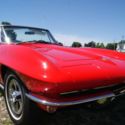 1965 CHEVROLET CORVETTE - CONVERTIBLE - FRAME OFF RESTORATION - MUST SEE - NO RS
1965 CHEVROLET CORVETTE - CONVERTIBLE - FRAME OFF RESTORATION - MUST SEE - NO RS
Mileage: 20,000
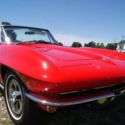 1965 CHEVROLET CORVETTE - CONVERTIBLE - FRAME OFF RESTORATION - A TRUE MUST SEE!
1965 CHEVROLET CORVETTE - CONVERTIBLE - FRAME OFF RESTORATION - A TRUE MUST SEE!
Mileage: 20,000
 1965 Chevrolet Corvette, Frame off Restored, 350hp, 4 Speed Convertible
1965 Chevrolet Corvette, Frame off Restored, 350hp, 4 Speed Convertible
Mileage: 72227
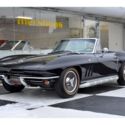 1965 Chevrolet Corvette, Triple Black 4 Speed Convertible Frame-off Restored!
1965 Chevrolet Corvette, Triple Black 4 Speed Convertible Frame-off Restored!
Mileage: 61871
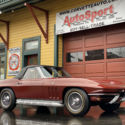 1965 Chevrolet Corvette 1965 Frame Off Restored #'s Matching 350hp Org Doc 11403
1965 Chevrolet Corvette 1965 Frame Off Restored #'s Matching 350hp Org Doc 11403
Mileage: 114038
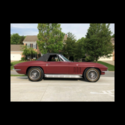 1965 Chevrolet Corvette 1965 #'s Matching Frame Off Restored 350hp Convert 13971
1965 Chevrolet Corvette 1965 #'s Matching Frame Off Restored 350hp Convert 13971
Mileage: 13971












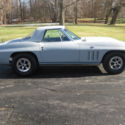 1965 Chevrolet Corvette Convertible Project - frame-off restored
1965 Chevrolet Corvette Convertible Project - frame-off restored
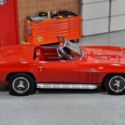 1965 CHEVROLET CORVETTE CONVERTIBLE L78 396/425 - Concours Frame Off Restoration
1965 CHEVROLET CORVETTE CONVERTIBLE L78 396/425 - Concours Frame Off Restoration
 1965 Chevrolet Corvette Frame Off Restoration 327 V8 4 Speed White Convertible
1965 Chevrolet Corvette Frame Off Restoration 327 V8 4 Speed White Convertible